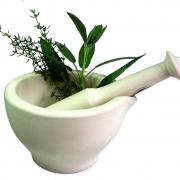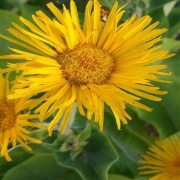Spring
FOR those of us who live in cities the arrival of Spring may not have much significance. It may pass unremarked, although our minds turn unbidden to thoughts of holidays. For our ancestors, however, the arrival of Spring was eagerly looked forward to, and reason for rejoicing.
After the damp and cold of Winter came warmth and blossom, and May was a very ‘Merry Moon’ indeed. It is only during the past century that the passage of the seasons has dwindled in apparent importance. As we become dwellers in the ‘Great City’, hemmed around with concrete, our senses confused by cacophony and flashing artificial lights, our minds awash with trivial induced desires and dulled by Judeo/Christian conditioning, we forget that we are part of nature.
Once we lived close to the land and exulted with the new lambs capering in the fields. Life rushed up in us as it did in the sown seeds sprouting in ploughed soil. Once we gathered in the woods on the Eve of May, men and women unashamed, to celebrate the fertile Earth and the Goddess of burgeoning life. In her honour we chose our May Queen, and garlanded her head with blossom. In honour of fertility we danced around our May-poles, aware and unashamed of their phallic meaning. All was celebration of life – life to the full and resurgent with the Spring.
All these customs were part of our lives for untold millenia, and they have been slow in fading. Even now nostalgia has brought about a kind of revival of their practice in some places, even if the surface motive for doing so has been the desire for ‘tourist dollars’.
To take joy in the rise of sap in the trees, and the birth of new life is universal in nature. In us, it is as old as we are ourselves, as a race. Somewhere in Northern Europa,the picture shown here – a pair of seals swimming in pursuit of spawning salmon – was carved on a reindeer-horn wand 12,000 or more years ago, by some old shaman of the folk. This carving, the result of minute and careful observation, and skillful, loving execution,is a celebration of flowing life-force and flowing water – the surging life of springtime rivers. The obverse side depicts swimming water-snakes, and these, with the seals and fish, and the waving water-plants, are so exact anatomically that they compare favourably with zoological drawings made today.

The exact portrayal of animal and plant life was not the purpose of this carving, however. Its use was magical and religious, and we cannot doubt it was intended for use in the Rites of Spring. Carefully carved above the swimming seals are LAGUZ RUNES. LAGUZ – The Rune of flowing water and flowing life force.






Leave a Reply
Want to join the discussion?Feel free to contribute!